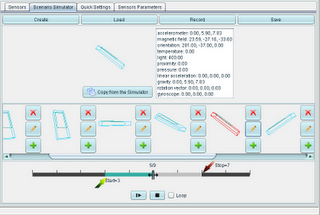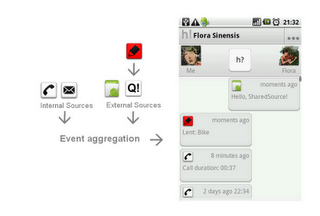ExisOne Business Intelligence is a powerful, full featured bi system. This video shows a demo of the built in google map integration.
Google Summer of Code & OpenIntents
This year was the first year OpenIntents participated in the Google Summer of Code. We are an open source organization which creates software for Android mobile phones and tablets, with special emphasis on interoperability with other software components.
As an organization we’ve found involvement in the Google Summer of Code extremely rewarding. The students have been able to improve their skills and gain practical experience in the stages of a software project, our organization has benefited from the interest generated from the students’ work, and the wider community will continue to benefit from the code the students have delivered.
We particularly enjoyed the international aspect of the program. All students, mentors, and co-mentors lived in different countries which did not prevent us from having a great time discussing the projects through Skype and live chat sessions. We received a great number of excellent proposals, from which two very different projects were chosen for the program.
Elena Burceanu’s project aimed to enhance the Sensor Simulator. During the first weeks, the GUI was polished, both in appearance and through clever code restructuring. After enhancing the GUI the number of supported sensors was increased and now includes Android sensors for gyroscope and general rotation vector. Finally, a scenario simulator was added, which creates sensor output from a set of initial states and the ability to change the time intervals between them. The sensor’s values are smoothly interpolated between the key frames. The final product was released as version 2.0. The source code and documentation for Elena’s project are now available to view.
Decline in Searches at Google & Bing
Comscore has an interesting post detailing a decline in “vertical search” (travel, local, product, jobs) queries for the first time in several years. This decline in searches at vertical sites has been mirrored by an attendant increase of share of searches at the general search sites.
From the article:
This trend is illustrated by the tremendous growth of non-search engine search entities during that time. In August 2011, of the 27 billion searches conducted on desktops in the United States, more than one-third occurred on non-search engines. Search on sites like Amazon, eBay, and Facebook has been growing faster than (and therefore gaining market share from) the core search engines for several years. But in the past year, this vertical search market actually contracted by 6% after several years of strong growth.
He went on to conclude that with recent acquistions (like ITA and Zagat) and improved local and travel search results this trend is likely to continue:
As these user improvements manifest themselves in the search results and searchers have increasingly begun to rely on them for their more vertically-oriented search needs, we are finally beginning to see a significant shift in the market. Growth in vertical searches is now actually conceding ground to the core search engines in a reversal of the past few years.
Now, don’t go taking this as the beginning of the end of non-search entities. Their business is still alive and well and will continue to serve a critical function for specialized searching behavior. But increasingly, search engines are improving the quality of their results in a way that is helping to fill the void once created by searches with vertical intent.


